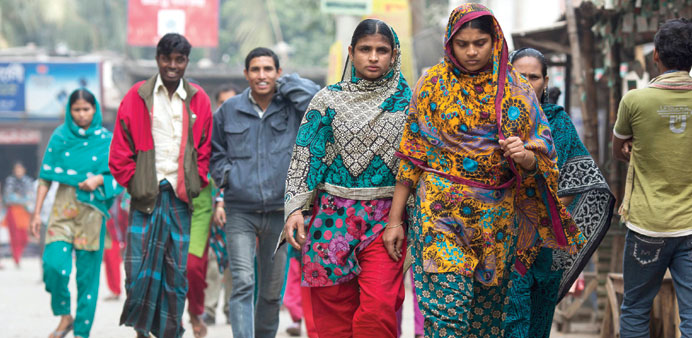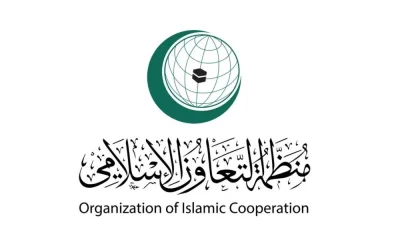Garment factory workers walk along a road during their lunch break in the Savar district of Dhaka, Bangladesh. So far, Islamic microfinance is centred on just a few countries, with the top three Indonesia, Bangladesh and Afghanistan accounting for 80% market share globally.
By Arno Maierbrugger/Gulf Times Correspondent /Bangkok
The confluence of two strongly expanding industries, microfinance and Islamic finance, has seen rapid growth in the past years on the grounds that, according to banking studies, an estimated 70% of people living in Muslim-majority countries do not use formal financial services. Adding to this is widespread poverty in many Muslim countries, with close to 650mn Muslims worldwide currently living on less than $2 per day.
As a result, Islamic microfinance is becoming an important instrument to fight such poverty, especially in rural areas, and improve access to financial services. This goes in line with Islamic finance emerging from a market niche to a powerful industry worldwide that saw more than 500 Shariah-compliant financial institutions having been created over the past 30 years in about 75 countries. The entire Islamic finance industry’s current market size is around $2tn, and the sector continues to grow at about 15% per year.
Islamic microfinance, as a part of this development, is even expected to grow faster at a rate of 19.7% annually over the period 2014 to 2018, according to US-based market researcher Technavio.
“Islamic microfinance has a major role in poverty alleviation in under-developed nations across the world. A huge part of the Islamic population is reluctant to use conventional financial products due to their incompatibility with Islamic principles. Islamic microfinance is a way to promote financial inclusion among such population,” the study says.
Islamic finance also has the potential to not only respond to unmet demand but also to combine the Islamic social concept of caring for the less fortunate with microfinance’s power to provide financial access to the poor. The most popular modalities are murabaha, a Shariah-compliant contract where the financier procures it directly from the market and resells it to the customer after adding a fixed margin; musharaka, a profit-and loss-sharing contract; mudaraba, where one party acts as financier while the other provides expertise in a project’s execution; Istisna’a, a contract in which a buyer purchases an item for deferred delivery whereby the price for the product can also be deferred or paid in instalments, and Qard al Hassan, an interest-free loan used to bridge short-term financing gaps, designed for people in need and the only type of loan in Islamic finance.
Presently, murabaha makes up 80% of the total Islamic microfinance market whose size is estimated at more than $1bn globally by Dubai-based the Alhuda Centre of Islamic Banking and Economics.
But so far, Islamic microfinance is centred on just a few countries, with the top three Indonesia, Bangladesh and Afghanistan accounting for 80% market share globally. However, in the recent past demand has also grown in countries such as Jordan, Algeria, Syria, Sudan, Somalia, Yemen, Azerbaijan, Kazakhstan, Pakistan, Mauritius and even Bosnia and Herzegovina, where between 20% and 40% of people cite religious reasons for not accessing conventional microloans.
There are also only a sizeable number of financial institutions that play a key role in Islamic microfinance. Among them are Al Baraka Islamic Bank (Bahrain-based with branches in Pakistan), Family Bank (also Bahrain), Canada-based project financier Ansar Financial and Development Corp, Al Rayan Bank (formerly Islamic Bank of Britain, the UK’s only wholly Shariah-compliant retail bank), Wasil Foundation (Pakistan), Mawarid Finance (Dubai), Bank of Karthoum (Sudan), Bank of Khyber (Pakistan), Biniog Sathi (Bangladesh), Banmk Al Jazira (Saudi Arabia), Akhuwat (Pakistan), Mezaan Bank (Pakistan), several Awqaf foundations across the Islamic world, as well as socially-minded initiatives such as Silatech in Qatar.



